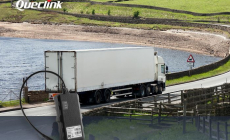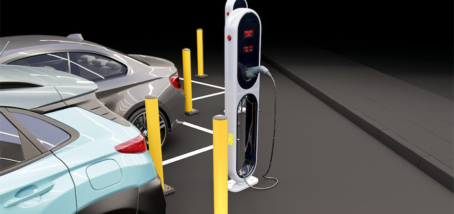-
Women Leading the Way in the UK Material Handling Industry - 2 days ago
-
DATA ANALYSIS – THE FOUNDATION OF EVERY PEAK SEASON - December 5, 2025
-
Creative education specialists Creative Hut give 3PL full marks for onboarding excellence - December 5, 2025
-
Unlimited Industries raises $12M to build the AI construction company that will power America’s future - December 4, 2025
-
Etaily lands strategic investment from Japan’s SMBC – bringing total funding to $24M for Social Commerce enablement platform - December 4, 2025
-
Prism eLogistics and Brand Angels Partnership Gives Brands the Full Package - December 3, 2025
-
New data shows Tesla in danger of losing its way as European consideration to buy Chinese cars jumps 16% in 12 months - December 3, 2025
-
QUECLINK DEVELOPS SATELLITE-ENABLED VEHICLE TRACKING FOR UNINTERRUPTED TRANSPORT MANAGEMENT - December 3, 2025
-
Ocado Ads partners with Epsilon for people-based precision - December 3, 2025
-
Combilift Unveils the 2025 Christmas video “Twelve Days of Christmas” – with a Twist! - December 1, 2025
As the government pushes forward with its plans for an electric vehicle (EV) future, Paul Roehricht, UK strategic account manager at Brandsafe, considers the necessity of protecting charge point installations from impact damage.
There are currently in excess of 42,000 electric vehicle charge points across the UK in over 15,000 locations*. This comes as the government has pledged £620 million in grants for electric vehicles and street charging points as part of what it calls an ‘ambitious zero emission vehicle mandate’. Moreover, this year will see developers on sites such as supermarkets and office blocks encouraged to install electric vehicle charging points in an attempt to help phase out the use of petrol and diesel cars before sales of them come to an end in 2030. The government expects the move to create upwards of 145,000 new charging points each year.
It’s clear that as the EV market in the UK continues to evolve and rapidly grow, operators will more and more need to protect their investment in charge points from damage and loss. So, what’s involved and what should be considered when it comes to product specification?
You need to start by thinking about the applications of the EV charge point. An installation must ensure vehicle charging is accessible, easy, safe, and practical for as many people as possible, incorporating design elements that mark it out from other features in car parks and service areas among other public places. From an aesthetic viewpoint, charge points should make the switch to EVs far more attractive, accessible, affordable and safe for drivers without negatively impacting pedestrians and other road users. These are all crucial factors that come into play when considering charge point protection.
Best practice
A key part of best practice involving specification of impact protection systems, or even improving or expanding existing ones, is covered by guidance from the Health and Safety Executive (HSE) on structures that could be damaged in a collision. Consider some fundamental questions, which might include the following, as part of a risk assessment of the proposed EV location:
- What features could be damaged by a collision?
- How likely it is that a vehicle will hit the feature?
- How fast will the vehicle be moving?
- At what angle might it hit the feature?
- How heavy is the vehicle?
- What would the effects of a collision be?
- How do we protect the features?
- What signage and markings do we need to provide to warn and inform drivers about the features?
You should also carefully consider choosing the right product supplier. First and foremost, it is essential that they must offer products appropriate for the project. This might seem somewhat obvious, but it is not uncommon for some safety products to look good on paper only to lack the necessary performance characteristics that make them suitable for the required application. Opt here for products whose performance has been assessed and verified through independent testing – this will always be a good starting point and a good indication of suitability. Equally, protective barriers specified to protect the installation should comply as a guideline with recognised standards such as those set out in BS 7669-3: 1994 vehicle restraint systems (the British Standard Code of Practice BS 6180: 2011 Barriers in and about buildings provides more information).
A reliable supplier should be able to advise on the performance requirements for each system on a project-by-project basis, which will allow you to tailor your designs to the needs of the installation. This is where it pays to partner with someone who has an in-house surveying and design team capability; who can directly support you and make it easier to create bespoke solutions on a project-by-project basis.
Responsive suppliers
As project timelines approach, it will be beneficial for your safety system supplier to deploy their own installation teams. They will be best placed to assist on-site, helping to make sure the project is completed within the desired budgets and timescales. They will also have the requisite technical knowledge to deal with any issues on-site during the installation process, further adding to fast turnaround times and efficiencies.
It is also worth considering the strategic partnerships of the supplier when the relevant products are required for your project. Ultimately, you will want to work with fast and responsive suppliers; companies who will guide and advise based on a consultative approach.
The resilient, cost-effective and flexible EV charge point protection range from Brandsafe is suitable for the impact protection of new or current EV charge point installations from vehicles in public and private car parks, service stations, industrial depots and HGV service yards, and includes an array of durable and impact resistant bollards, wheel stops and barriers.
There’s little doubt that safety is a critical component of EV charge points and must be considered holistically as part of the overall installation. There will always be room for improvement when it comes to safeguarding and protecting people and vehicles, and mitigating risk. More at www.brandsafeprotection.com
*According to www.zap-map.com

































